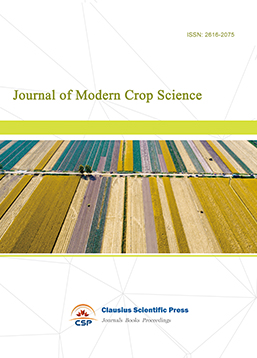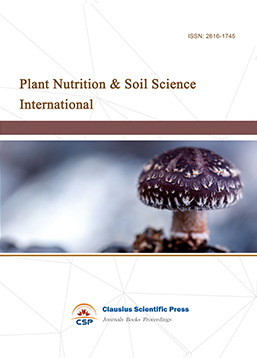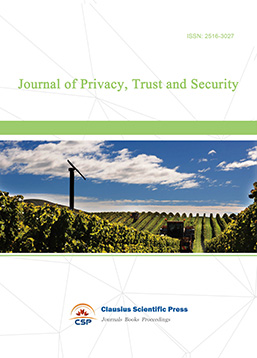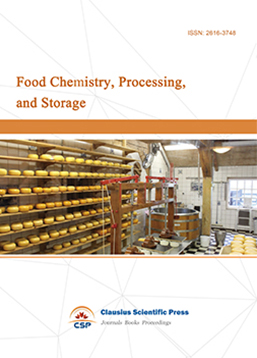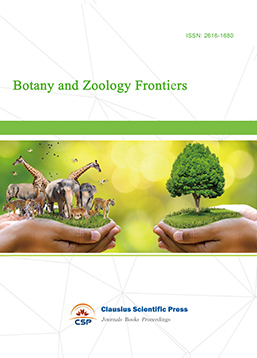Anaerobic Fermentation with Commercial Microbes for Enhanced Sensory Quality of Yunnan Arabica Coffee: A Practical Approach for Small-Scale Processors
DOI: 10.23977/afshn.2025.070110 | Downloads: 15 | Views: 415
Author(s)
Bowen Zhu 1
Affiliation(s)
1 HD Beijing School, Beijing, China
Corresponding Author
Bowen ZhuABSTRACT
Yunnan, China's primary Arabica coffee-producing region, faces a critical sensory challenge: its dominant Catimor variety, accounting for over 90% of plantings, typically exhibits nutty and caramel notes but lacks sweetness and complex flavor layers [1]. Chemical analyses have identified that Yunnan coffee beans are characterized by insufficient levels of fruity and sweet aroma compounds such as ethyl propionate, while containing higher levels of furans and pyrazines associated with woody or earthy undertones[2]. Sensory studies using descriptive analysis of 25 representative samples further confirm these limitations, noting that Yunnan coffee frequently lacks intricate flavor profiles, with "sweet" attributes ranking low among 57 identified sensory descriptors[3]. Compounding this issue, small-scale processors rely on traditional processing methods due to limited access to advanced fermentation equipment, restricting technical interventions for flavor enhancement[4]. To address these flavor-related quality issues, this study explored a low-cost solution: improving sensory attributes through anaerobic fermentation with commercial microbes. Three anaerobic groups (3 biological replicates each) were designed: spontaneous fermentation (Group A), commercial lactic acid bacteria (LAB, Group B), commercial yeast (Group C); traditional sun-drying (Group D) was the control. High-throughput sequencing, LC-MS metabolomics, and double-blind SCAA sensory evaluations (by 5 CQI Q Graders) were used for analysis. Results showed commercial microbes reshaped microbial communities: on day 15, Group A had Levilactobacillus / Wickerhamomyces, Group B had Lactiplantibacillus / Lentilactobacillus, and Group C had increasing Saccharomyces. LC-MS revealed distinct metabolite profiles (e.g., organic acids, phenolics) in anaerobic groups. Sensory scores: samples fermented without anaerobic conditions scored significantly lower than all anaerobic treatments in flavor, aftertaste and overall aspect respectively, compaired with samples from LAC treatment group . Among the treatment groups, Group B exhibited the best performance in flavor balance, cleanliness, and aftertaste, followed by Group A, while Group C scored slightly lower but remained significantly superior to the sample fermented without anaerobic conditions. Although no significance statistically, decreased total score can be observed in non-anaerobic group when compared with samples from A, B and C group, from 83.05~82.5 in fermented group A, B and C, to 81.65 in average in non-anaerobic group. This method—commercial microbes + simple sealed containers, no sterilization (preserving terroir via native microbiota)—is easy and low-cost, ideal for small-scale processors. It provides a feasible way to improve Yunnan coffee's quality and economic value.
KEYWORDS
Yunnan Arabica Coffee; Anaerobic Fermentation; Commercial Microbes; Sensory Quality; Small-Scale Processors; Microbial Community; MetabolomicsCITE THIS PAPER
Bowen Zhu, Anaerobic Fermentation with Commercial Microbes for Enhanced Sensory Quality of Yunnan Arabica Coffee: A Practical Approach for Small-Scale Processors. Advances in Food Science and Human Nutrition (2025) Vol.7: 65-76. DOI: http://dx.doi.org/10.23977/afshn.2025.070110.
REFERENCES
[1] Hu, R., Xu, F., Chen, X., Kuang, Q., Xiao, X., & Dong, W. (2024). The growing altitude influences the flavor precursors, sensory characteristics and cupping quality of the Pu’er coffee bean. Foods, 13(23), 3842. https://doi. org/10. 3390/foods13233842
[2] Bi, X., Yu, H., Hu, F., Fu, X., Li, Y., Li, Y., Yang, Y., Liu, D., Li, G., Shi, R., & Dong, W. (2023). A systematic analysis of the correlation between flavor active differential metabolites and multiple bean ripening stages of Coffea arabica L. Journal of Agricultural and Food Chemistry. https://doi.org/10.1021/acs.jafc.3c00001
[3] Hu, G., Yin, Y., Han, X., Zhang, Y., & Liu, J. (2022). Characteristic flavor compounds and sensory profiles of washed Yunnan Arabica coffee. Molecules, 27(21), 6989. https://doi.org/10.3390/molecules27216989
[4] Global Times. (2025, March 24). Yunnan coffee in global spotlight, thanks to its natural advantages, elevated quality. https://www.globaltimes.cn/page/202503/1330772.shtml
[5] International Coffee Organization (ICO). (2023). Coffee development report 2023: Growing for prosperity. London, UK: ICO.
[6] Velmourougane, K. (2013). Impact of natural fermentation on physicochemical, microbiological and cup quality characteristics of Arabica and Robusta coffee. Proceedings of the National Academy of Sciences India Section B: Biological Sciences, 83(2), 233–239. https://doi.org/10.1007/s40011-013-0473-9
[7] De Melo Pereira, G. V., de Carvalho Neto, D. P., Magalhães Júnior, A. I., Vásquez, Z. S., Medeiros, A. B. P., Vandenberghe, L. P. S., & Soccol, C. R. (2019). Exploring the impacts of postharvest processing on the aroma formation of coffee beans – A review. Food Chemistry, 272, 441–452. https://doi.org/10.1016/j.foodchem.2018.09.070
[8] Puertas, G., Guerrero, K., Cortés, M. P., & Suárez, H. (2022). Cup quality and biochemical attributes of coffee (Coffea arabica L.) varieties grown in different agroecological regions of Colombia. Agronoma Colombiana, 40(2), 189–199. https://doi.org/10.15446/agron.colomb.v40n2.103180
[9] Cheng, B., Furtado, A., Smyth, H. E., & Henry, R. J. (2016). Influence of genotype and environment on coffee quality. Trends in Food Science & Technology, 57, 20–30. https://doi.org/10.1016/j.tifs.2016.08.004
[10] Zhai, H., Dong, W., Fu, X., Li, G., & Hu, F. (2024). Integration of widely targeted metabolomics and the e-tongue reveals the chemical variation and taste quality of Yunnan Arabica coffee prepared using different primary processing methods. Food Chemistry: X, 22, 101286. https://doi.org/10.1016/j.fochx.2024.101286
[11] Zhang, S. J., Yang, M., Liu, C., Chen, X. D., & Wang, J. (2021). Quality characteristics of Yunnan coffee and influencing factors. Agronomy, 11(10), 2153. https://doi.org/10.3390/agronomy11102153
[12] Kartika, A. A., Sunarharum, W. B., & Mahatmanto, T. (2024). The impact of self-induced anaerobic fermentation (SIAF) on coffee antioxidants: A review. Journal of Experimental Life Sciences, 14(1), 40–49. https://doi.org/10. 18052/www. scipress.com/JELS.14.40
[13] Hu, G., Peng, C., Xie, Y., Liu, J., Han, X., & Wang, Y. (2023). Microbial community succession and metabolite changes during Yunnan Arabica coffee bean fermentation. Food Research International, 172, 113163. https://doi. org/10. 1016/j. foodres.2023.113163
[14] Liu, J., Huang, W., Zhou, R., Wang, Y., Zhang, L., & Liu, S. (2020). Microbial diversity and chemical analysis of Shuangjiang wine starter for rice wine fermentation. Journal of the Science of Food and Agriculture, 100(6), 1898–1906. https://doi.org/10.1002/jsfa.10293
[15] Elhalis, H., Cox, J., & Zhao, J. (2021). Ecological succession of the microbial communities of an alkaline-fermented food indigenous to Yunnan Province, China. Frontiers in Microbiology, 12, 701713. https://doi.org/10.3389/fmicb.2021. 701713
[16] Evangelista, S. R., Miguel, M. G. D. C. P., de Souza Cordeiro, C., Silva, C. F., Pinheiro, A. C. M., & Schwan, R. F. (2014). Improvement of coffee beverage quality by using selected yeasts strains during the fermentation in dry process. Food Research International, 61, 183–195. https://doi.org/10.1016/j.foodres.2014.03.024
[17] De Melo Pereira, G. V., Neto, E., Soccol, V. T., Medeiros, A. B. P., Woiciechowski, A. L., & Soccol, C. R. (2020). Potential of lactic acid bacteria to improve the fermentation and quality of coffee during on-farm processing. International Journal of Food Science & Technology, 55(8), 3279–3291. https://doi.org/10.1111/ijfs.14566
[18] Pereira, G. V. d. M., Neto, D. P. d. C., Soccol, V. T., Medeiros, A. B. P., Woiciechowski, A. L., & Soccol, C. R. (2015). Conducting starter culture-controlled fermentations of coffee beans during on-farm wet processing: Growth, metabolic analyses and sensorial effects. Food Research International, 75, 348–356. https://doi.org/10.1016/j.foodres. 2015. 05. 032
[19] Silva, C. F., Schwan, R. F., Dias, Ë. S., & Wheals, A. E. (2008). Microbial diversity during maturation and natural processing of coffee cherries of Coffea arabica in Brazil. International Journal of Food Microbiology, 120(2), 160–169. https://doi.org/10.1016/j.ijfoodmicro.2007.09.017
[20] Yunnan Provincial Department of Agriculture and Rural Affairs. (2024). Yunnan Agricultural University established China's first dedicated microbial strain resource bank for coffee fermentation. Retrieved from https://www.ynagri.gov.cn/
[21] Liu, C., Zhao, D., Ma, W., Zhang, X., & Wang, A. (2016). Denitrifying sulfide removal process on high-salinity wastewaters in the presence of Halomonas sp. Applied Microbiology and Biotechnology, 100(3), 1421–1426. https://doi.org/10.1007/s00253-015-7039-6
[22] Chen, S., Zhou, Y., Chen, Y., & Gu, J. (2018). fastp: An ultra-fast all-in-one FASTQ preprocessor. Bioinformatics, 34(17), i884–i890. https://doi.org/10.1093/bioinformatics/bty560
[23] Han, C., Shi, C., Liu, L., Han, J., Zhang, Y., & Wang, J. (2024). Majorbio Cloud 2024: Update single-cell and multiomics workflows. Imeta, 3(4), e217. https://doi.org/10.1002/imt2.217
[24] Schloss, P. D., Westcott, S. L., Ryabin, T., Hall, J. R., Hartmann, M., Hollister, E. B., Lesniewski, R. A., Oakley, B. B., Parks, D. H., Robinson, C. J., & Sahl, J. W. (2009). Introducing mothur: Open-source, platform-independent, community-supported software for describing and comparing microbial communities. Applied & Environmental Microbiology, 75(23), 7537–7541. https://doi.org/10.1128/AEM.01541-09
[25] Segata, N., Izard, J., Waldron, L., Gevers, D., Miropolsky, L., Garrett, W. S., & Huttenhower, C. (2011). Metagenomic biomarker discovery and explanation. Genome Biology, 12(6), R60. https://doi.org/10.1186/gb-2011-12-6-r60
[26] Douglas, G. M., Maffei, V. J., Zaneveld, J. R., Yurgel, S. N., Brown, J. R., Taylor, C. M., Huttenhower, C., & Langille, M. G. I. (2020). PICRUSt2 for prediction of metagenome functions. Nature Biotechnology, 38(6), 685–688. https://doi. org/10.1038/s41587-020-0548-6
[27] Zhang, S. J., De Bruyn, F., Pothakos, V., Torres, J., Falconi, C., Moccand, C., Weckx, S., & De Vuyst, L. (2019). Following coffee production from cherries to cup: Microbiological and metabolomic analysis of wet processing of Coffea arabica. Applied and Environmental Microbiology, 85(6), e02635-18. https://doi.org/10.1128/AEM.02635-18
| Downloads: | 2635 |
|---|---|
| Visits: | 92785 |

 Download as PDF
Download as PDF